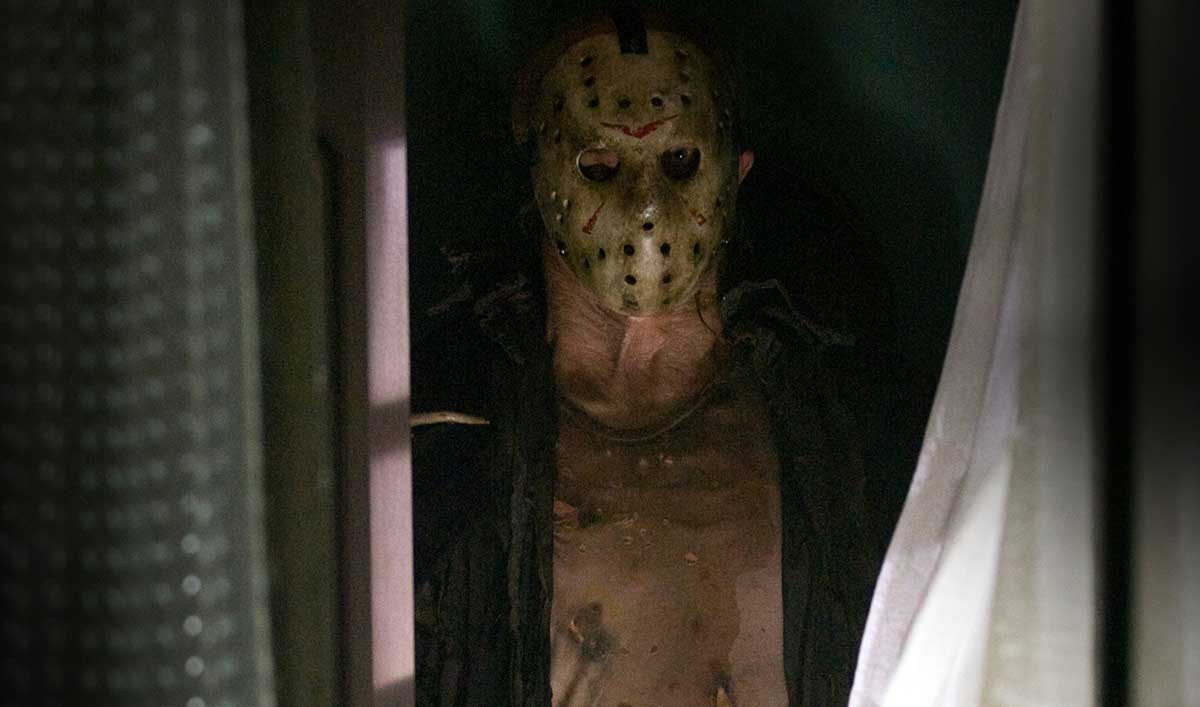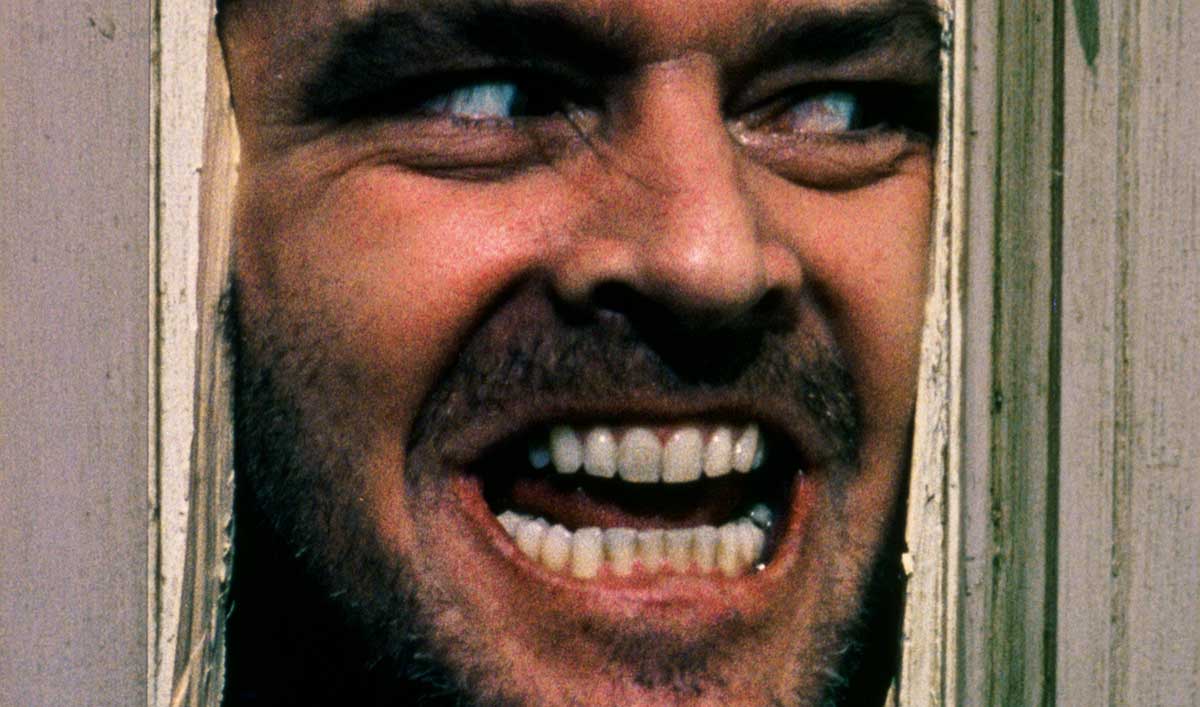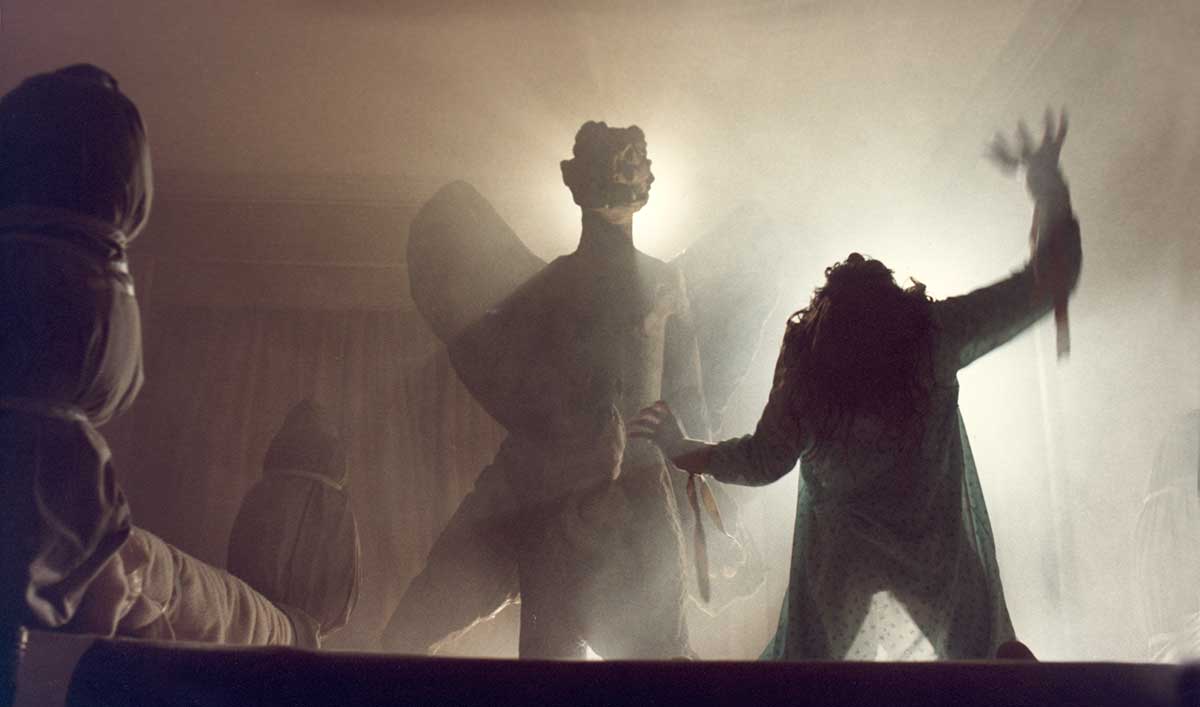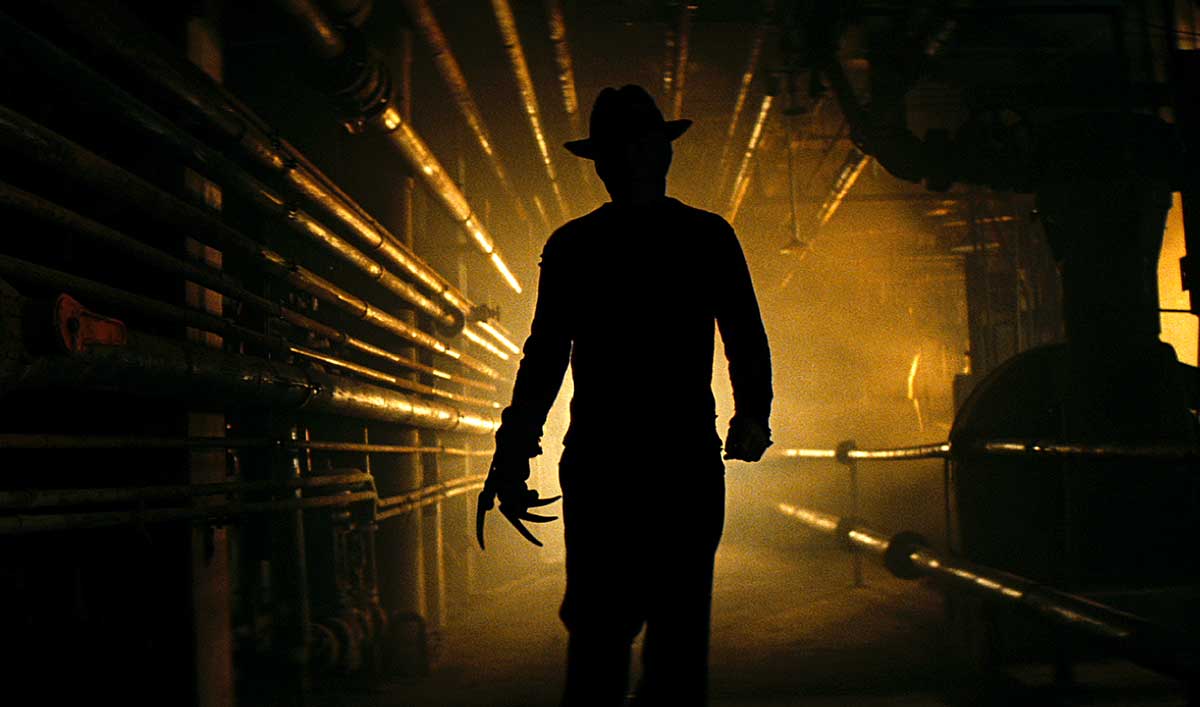AMC FearFest: Are Horror Movies Good for You?
Spooky season is here, and with it, a celebratory spectacle of scary films and on-screen scares. AMC's annual horror movie spectacular FearFest is underway now on amc.com, the AMC apps, and AMC+ all through October until Halloween. It's a social tradition to indulge in the darker side of cinema as the nights become longer (or year-round if you're a real horror fan), but horror movies can do more for you than just get you in the holiday spirit. Some studies have shown that scary movies are actually good for you! In some cases, scary movies have been shown to ease anxiety, improve your health, burn calories, and even spice up your love life. Read on to discover how horror movies can do more for you than just provide a fleeting good time.
How Horror Movies Can Help Anxiety
Even when cozied up in the safety of your favorite armchair, while you're watching a horror movie, your mind races to process the influx of new information created by the frightening stimuli of your screen. This automatic switch in mental focus can actually be a good thing for long-suffering victims of anxiety.
During a horror movie, the human brain's limbic system processes immediate emotions and reactions to stress and terror regardless of whether or not the threat is "real." The amygdala, which plays a primary role in decision-making and emotional stress responses, splits into two reactions when faced with new fear-inducing stimuli.
The first reaction bypasses any contextualizing information to immediately trigger a flight-or-fight response through the body, typically dumping adrenaline through the endocrine system. The amygdala's second reaction takes longer (less than a full second, but in a stress response that can be a matter of life and death) and processes the clarifying information in the situation to decide the best course of action. So when you're watching a movie and the deranged slasher pops out of nowhere to claim his next victim, and you immediately jump back -- that's your brain processing a fearful stimuli and reacting accordingly to keep you safe. When the contextualizing information gets to your brain a second later, and you realize there's no need to be scared of an onscreen chainsaw, you laugh it off while the adrenaline ripples throughout your body. Typically that's followed by calming and feel-good chemicals like serotonin and dopamine.
Watch Friday the 13th now on amc.com, the AMC apps and AMC+:
For people with anxiety, this full-body takeover in response to an external event they've controlled and consented to (a scary scene in a movie they've chosen to watch, for instance), can be a sudden reprieve from the otherwise racing thoughts buzzing in their mind due to underlying social fears and phobias. Those experiencing symptoms of anxiety typically find it hard to stay grounded in the present due to unrestrained dwelling in the past or constant worry about the future, and the limbic-response-seizing effects of scary movies can help keep people in the present.
In other cases, watching scary movies can also act as a kind of “exposure therapy” to help viewers overcome certain fears. The feeling of accomplishment garnered from facing something that originally frightened you can help you build the confidence you need to conquer other nightmare-inducing scenarios. Scary movies are a low risk way to test whether a presumed fearful experience is really as dangerous as you imagine it to be. And you don't need to plop yourself down for an hours-long stint in front of the TV to feel the effects. You can start by watching a single scene from a movie or series to build a sense of resistance to the visceral feelings of terror, and make empowered choices about what you want to consume and experience.
How Horror Movies Can Improve Your Health
A scary movie marathon can do more for you than improve your mood. Research has shown that it can also improve your physical well-being. According to a 2012 study from the University of Westminster, researchers found that while viewing horror movies like The Shining, The Exorcist, and Jaws, audience members burned up to nearly 200 calories during their scary cinema experience. This is presumed to be in large part because the body's fight-or-flight response consumes a considerable amount of the body's latent energy in order to keep you poised to react to a stressful situation. And don't forget the “jump” in “jumpscare” -- jumping away and squirming in your chair while watching a horror movie definitely expends more calories than more mild movie experiences.
Watch The Shining now on amc.com, the AMC apps and AMC+:
And that's not the only benefit to onscreen scares. Researchers in a study from Coventry University, published in the journal Stress in 2003, found that watching a scary movie boosts the body's immune system -- if only temporarily. In the study, horror movie viewers were found to have a higher level of protective white blood cells circulating in the bloodstream while watching a scary flick. The rush of adrenaline triggered by a jumpscare or spooky scene mobilizes the immune system to respond to an impending danger, even when the perceived threat isn't real.
Horror movies have also been linked to increased brain activity. While a horror viewer consciously knows the events in the movie they're watching aren't real, the brain is still actively consuming information about the stress response and forming new neural pathways in order to combat any potential future threats like the ones that are triggered by a limbic response.
In addition, the human brain is predisposed to unpack puzzles and make patterns from contextualized connections. When faced with the mystery and secrecy that typically shrouds the events and atmosphere of a horror movie, the brain is working overtime to make connections in order to “get ahead” of the threat. Horror films are like modern fairy tales and fables in this way, and can function like cautionary tales to would-be victims of suspicious figures and behavior. It's easy to take for granted the things we now know not to do: don't pick up suspicious hitchhikers, don't go into the abandoned cabin in the woods, don't investigate weird, scary noises in the dark. But it's in large part because of horror movie culture that those actions are on the no go list.
A caveat to these points, is that the aforementioned studies conducted research on participants who willingly consented to watching horror films. So don't bully an unwilling friend into watching anything they don't want to by saying it will be good for them -- it very well may be the opposite. But if you're a horror fan already, or you're ready to dip your toes into that metaphorical dark water of spooky cinema for the first time, you're in luck!
Watch The Exorcist now on amc.com, the AMC apps and AMC+:
How Horror Movies Can Boost Your Love Life
It seems trite now to say that if you want a first date to go well, you should take them to an amusement park or a scary movie. But that's not just archaic dating advice—it's biology. Numerous studies have shown that experiencing a fearful situation, one which activates the body's fight-or-flight response, can increase feelings of sexual attraction to a partner. And this isn't because experiencing a “near-death” situation activates an urge to procreate before your number is up. In fact, when the body goes into a stress response, sex and sexual fulfillment are one of the bodily processes that gets put on hold, like digestion. Rather, the body's physical response to both danger and lust are so similar, that the mind sometimes can't parse the context of the feelings.
In D Magazine, UT Dallas neuroscientist Ian Robertson examines the link between feelings of fear and desire, recalling a 1974 research experiment which made male participants walk across a flimsy suspension bridge over the churning Capilano River in Vancouver with an attractive female researcher standing on it. She asked the male passerby if they would write a short story for a psychology study. Further upriver on much more solid, safer ground, the same woman then asked different male passerby to do the same thing. The researchers discovered that the stories of the men on the flimsy bridge were much more sexually charged than those of the men on the solid bridge, and the men from the flimsy bridge were more likely to try to make contact with the woman after the study. Robertson connects this research to a 1962 study, titled ‘Cognitive, Social and Psychological Determinants of Emotional State,' in which subjects were injected with adrenaline, but were not told it was adrenaline and were in fact told to expect different symptoms. Then they were left in a waiting room with either a happy, laid back actor or a loud, angry actor. The participants who were injected with adrenaline but not told the symptoms to expect from the drug, interpreted their feelings based on the energy of the other person in the room: those with the happy partner reported feeling happy and excited, while those with the disgruntled, angry partner said they felt angry.
Watch A Nightmare on Elm Street now on amc.com, the AMC apps and AMC+:
A racing pulse, quick breathing, sweaty palms, and flushed face, are all symptoms of feeling excitable, or angry. Or fearful. Or aroused. The body's response to adrenaline matches the symptoms of a number of human emotions, so the mind looks for contextualizing information in its surrounding environment to explain what the body is feeling. In the case of the swinging bridge experiment, the men felt the effects of their adrenaline-inducing walk across the flimsy bridge, and then the subconscious mind, knowing that the body was safe and whole, focused their feelings of rapid heartbeat, sweaty palms, and quick breathing on the external stimuli of a pretty woman paying attention to them. "I must be aroused," the mind thinks on a deep level beyond conscious thought, and then it orients new action and thought based on this subconscious assessment.
The same thing happens when you're watching a scary movie, or riding a “death-defying” roller coaster on a date. Adrenaline pumps through your body in the face of a stressful moment, and your mind subconsciously processes the symptoms: quick pulse, rapid heartbeat, dilated pupils, flushed face, sweaty palms. Seeing no real threat to your person, your mind logs the area for a stimuli that could cause this reaction, often landing on your date and thinking, “Wow, I must really like this person.” When calming and happy brain chemicals like serotonin and dopamine follow the limbic stress reaction, this assessment is only heightened.
Beyond the subconscious effects, watching horror movies as a couple can be a great way to build a deeper connection with your partner. Not only can they bring you together, literally, with the perfect opportunity to snuggle on the couch, but horror movies open up a space for you to learn more about each other. You can see how your partner reacts to high stress situations. You can discuss your fears together, sharing what keeps you up at night. Most importantly, you can log how your partner reacts to learning about your fears and insecurities. Feeling open to vulnerability together is one of the key ingredients of a healthy, long lasting relationship. So put on a horror movie, snuggle together on the couch, and indulge in being scared together. Boo!
Are you ready to make October your happiest, healthiest, most loving month this year? AMC's annual horror movie spectacular, FearFest, is happening now through Halloween on-air, online, and on AMC+, the company's premium subscription bundle (currently available to Comcast Xfinity, DISH and Sling TV customers).
This year's library of spooky selections features 91 titles (see the full list here), including horror franchises such as Halloween, Friday the 13th, The Amityville Horror, Final Destination, Children of the Corn, Insidious, and many more. See the full on-air schedule here.
Eli Roth's History of Horror returns for Season 2 on Saturday, October 10 at 10/9c. Watch the Season Premiere early now on amc.com, the AMC apps for mobile and devices, and on AMC+.



